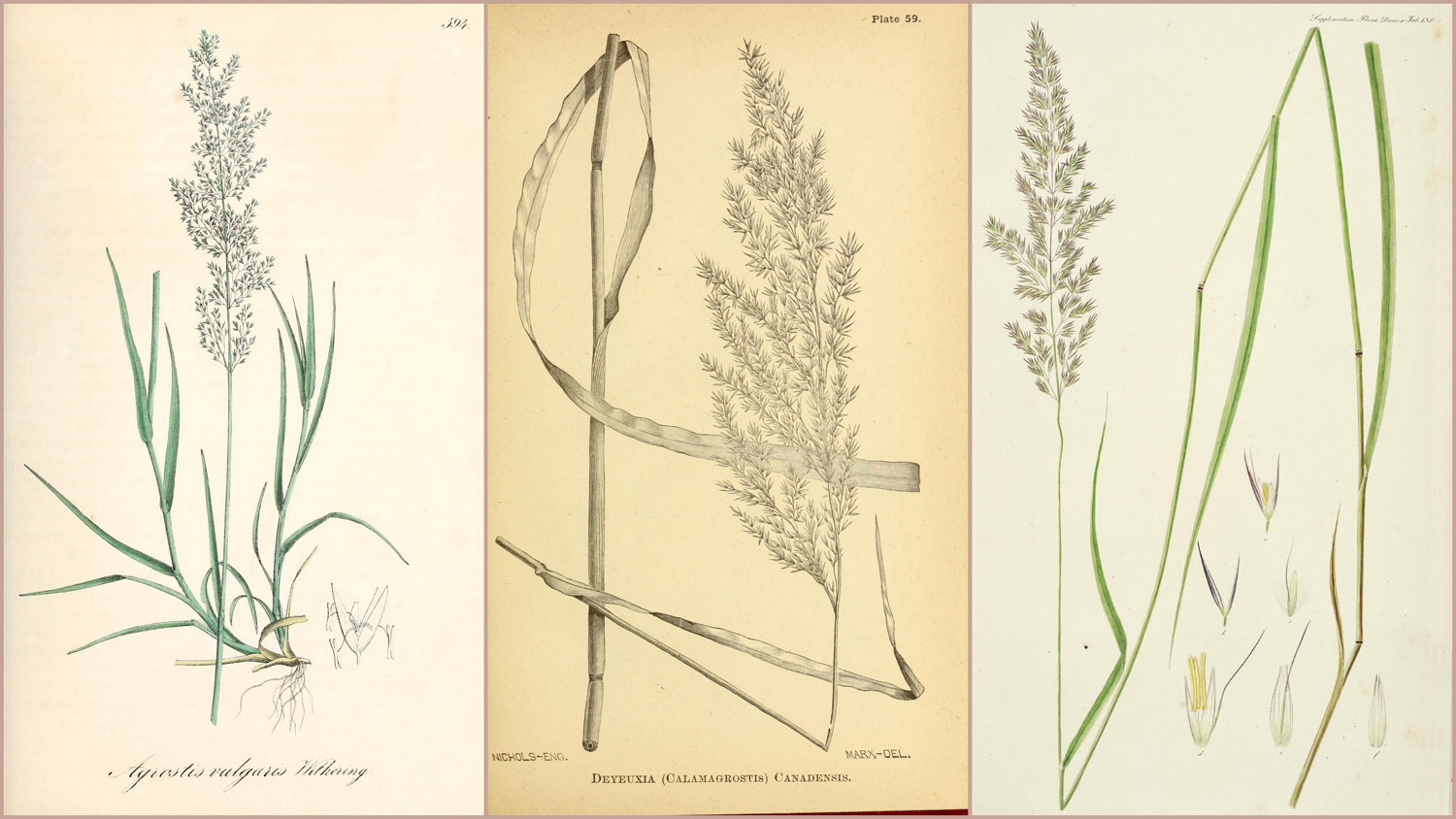DIGGING DEEPER
Calamagrostis comes from the Greek kalamos (reed) and agrostis (a kind of grass), hence the common name “reed grass.”
Other grasses share the common name of “reed” grass. For example, Arundo donax is called Giant Reed and is used for making reeds in musical instruments, Phalaris arundinacea, known as Reed Canary Grass, is a marsh plant that spreads by rhizomes. Grasses within Calamagrostis are sometimes referred to as “small reed.”
The most famous member of Calamagrostis is C. x acutiflora ‘Karl Foerster’. When it was discovered in the Hamburg Botanical Garden in the 1930s, this lovely grass was believed to be a variation of C. epigejos (C. epigejos ‘Hortorum’).
German plantsman Karl Foerster (1874-1970) was not convinced. His studies concluded it was a naturally occurring hybrid of C. epigejos and C. arundinacea. For a short time it was known as C. x acutiflora ‘Stricta’. However, because Latinized cultivar names are considered unacceptable in botanic nomenclature, it was rechristened C. x acutiflora ‘Karl Foerster’.
Introduced to the U.S. in 1964, ‘Karl Foerster’ is now one of the most popular grasses in the nursery trade. It is the first grass to receive the Perennial Plant of the Year Award® (2001), which awards plants for their good looks, long-lasting beauty, and undemanding growing requirements. From ‘Karl Foerster’ came colorful variations, such as white-green variegated C. x acutiflora ‘Avalanche’ and ‘Overdam’, and the gold-green variegated ‘Eldorado’. All these selections are cool season grasses, blooming in spring and slowing their growth as temperatures climb in early summer.
Karl Foerster’s legacy lives on in the Foerster Stauden Perennial Garden in Potsdam, Germany. These grounds have been awarded landmark status and act as a memorial to this gifted horticulturalist.

![Karl Foerster in his garden on September 28, 1967.<p></p> Photo by Erich Braun, scanned from negative [CC BY 3.0 (http://creativecommons.org/licenses/by/3.0)]](/assets/files/images/Popular_Calamgrostis_KarlFoerster.jpg)


